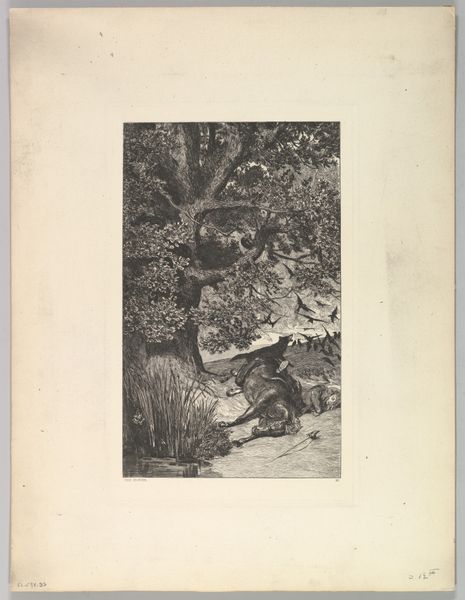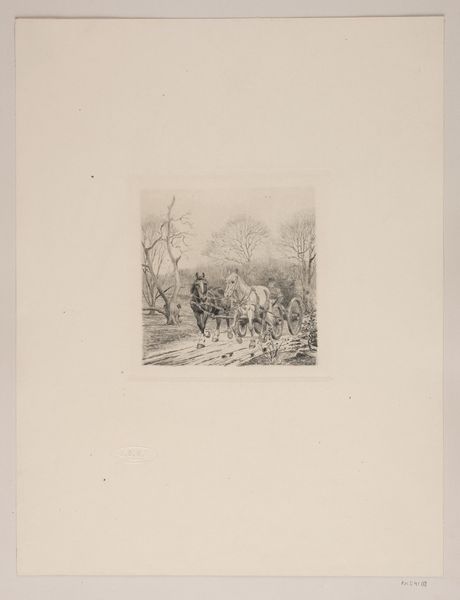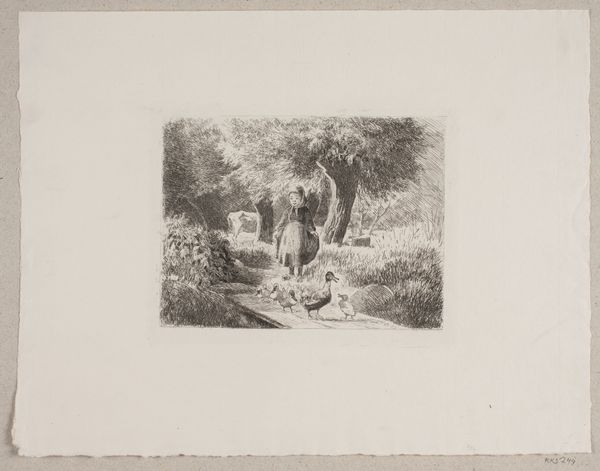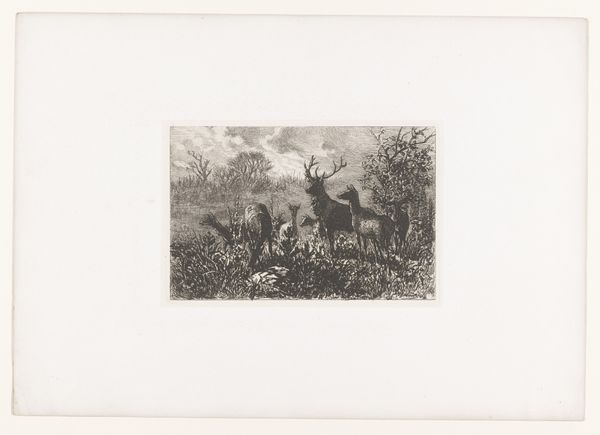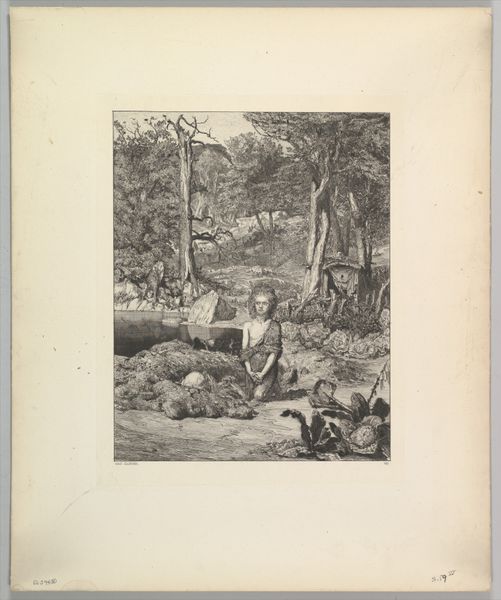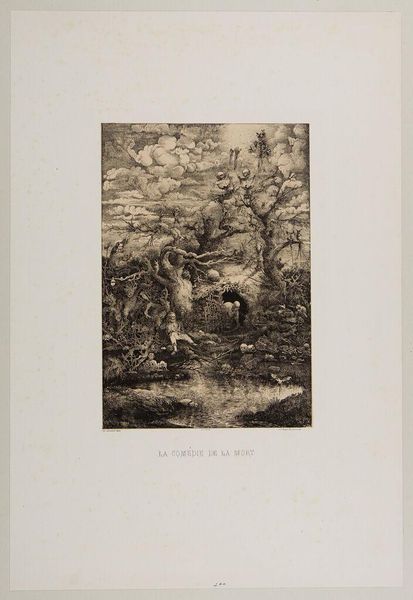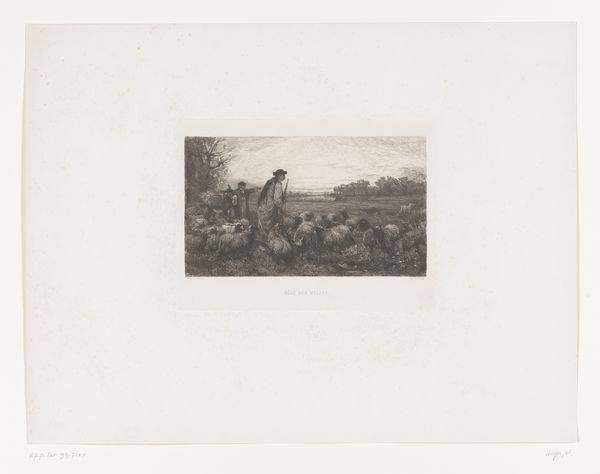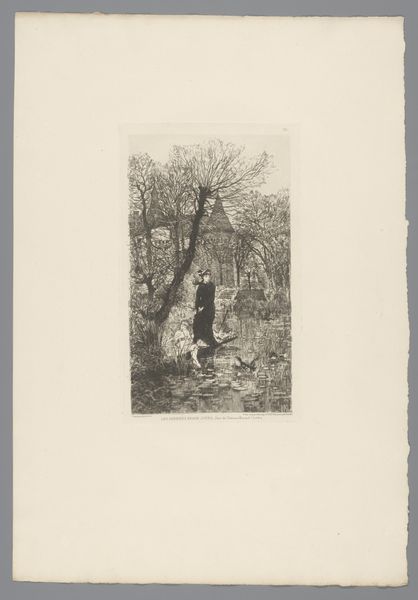
drawing, print
#
drawing
# print
#
landscape
#
genre-painting
#
realism
Dimensions: Sheet: 18 1/2 in. × 13 in. (47 × 33 cm) Plate: 10 5/8 × 8 1/4 in. (27 × 21 cm)
Copyright: Public Domain
Curator: Here we have Charles Jacque’s “Pastoral Scene,” created in 1864. It's currently held at the Metropolitan Museum of Art. Jacque was known for his prints and drawings depicting rural life. Editor: It feels serene. The monochromatic palette creates a soft, almost nostalgic mood. The composition is interesting; all these sheep in the front and this shadowy, quiet moment between the shepardess and her partner behind them. It definitely romanticizes rural labour. Curator: Precisely. Jacque positioned himself within the Realist movement, focusing on genre scenes. His work contributed to shaping an idealized vision of the countryside. Note how he uses light and shadow to define form. It's incredibly detailed for a print, particularly in the rendering of the sheep's wool. His choice of subject matter, especially these everyday scenes of rural existence, reflects the Realist focus on capturing contemporary life and working class culture. Editor: But isn’t that “capturing” often a simplification? Looking at it through today’s eyes, this image seems to lack a critical lens. There is no exploration of the exploitation of those people who work and depend on nature for survival. Where’s the class struggle in the landscape? Where’s the historical context of France during that period, the political upheaval and industrial advancement, and their effects on agrarian work? It's a pretty, palatable picture of an industry at war. Curator: Certainly, Realism wasn't always explicitly political. It often served as a social commentary through mere representation. And we can also ask: how does art affect us beyond political themes? What were its impacts during the period of its creation? In this picture, Jacque presents an accessible, tranquil vision that offers an appealing contrast to the growing urban industrial landscapes that would then attract people in the countryside into a precarious condition. Editor: Right, its value lies less in direct political action, but it invites viewers to confront the lives and working conditions of rural communities. It urges us to consider the larger societal context—gender, identity, labor, economy and so on—around its reception, like the nostalgia it possibly spurred in audiences disconnected from those environments. The fact that these images are so different from most people's experiences even now. Curator: Yes, in many ways, it’s still pertinent. So much landscape artwork and paintings have served to encourage a reconnection between us and nature, making a broader, social argument in the process. Editor: So even without overtly advocating a political position, these works perform important social work through representation, opening up spaces to interrogate existing historical narratives.
Comments
No comments
Be the first to comment and join the conversation on the ultimate creative platform.
